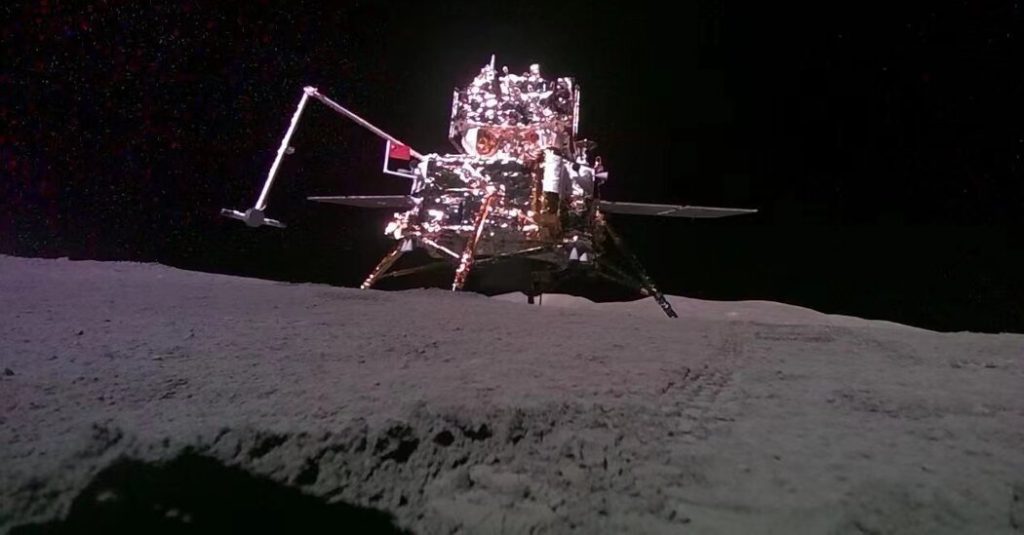The Chinese National Space Administration’s Chang’e-6 lander is set to return to Earth with a capsule carrying soil from the far side of the moon on Tuesday. This mission is expected to be the latest success in a series of Chinese lunar exploration missions since 2007. The landing is expected to take place in China’s Inner Mongolia region, specifically the Siziwang Banner area, and the time is estimated to be 1:41 a.m. Eastern time. The mission’s conclusion has not been confirmed by China’s space agency yet, but NASA’s Goddard Space Flight Center believes the capsule will land at 1:41 p.m. local time. The Times will share an embedded live video stream if the Chinese space agency provides one closer to the expected landing time.
The far side of the moon, often mistakenly referred to as the dark side, actually receives plenty of sunlight. Unlike the near side that is visible from Earth, the far side has fewer dark plains, more craters, and a thicker crust. It remains a mystery why the two sides of the moon are so different. China’s Chang’e program, named after the Chinese moon goddess Chang’e, aims to study these differences and expand our understanding of the moon. The program consists of three stages: orbiting, landing, and sampling. Previous missions such as Chang’e-1, Chang’e-2, Chang’e-3, and Chang’e-4 have provided valuable data and samples from both the near and far sides of the moon.
Chang’e-6, the latest mission in the Chang’e program, launched on May 3 with the goal of returning material from the far side of the moon. This mission faces additional challenges since direct communication with the lunar far side is not possible. To overcome this obstacle, the Chinese space agency utilized two satellites, Queqiao and Queqiao-2, to stay in touch with Chang’e-6 during the mission. The spacecraft successfully landed on the moon in June, specifically in the South Pole-Aitken basin, the oldest and deepest impact crater on the lunar surface. Equipped with a mechanical scoop and a drill, Chang’e-6 collected lunar rock and dust from various locations on the moon.
After gathering samples, a rocket on the spacecraft lifted off on June 3, sending the materials into orbit around the moon. Three days later, the samples were reunited with a spacecraft that had remained in lunar orbit, and preparations for the journey back to Earth began. On Tuesday, the sample container will attempt to re-enter Earth’s atmosphere, hopefully leading to a successful recovery similar to Chang’e-4. If the mission is a success, China will recover the lunar materials, and scientific research on the contents will commence. This mission marks another significant step forward in China’s space exploration efforts and is set to contribute valuable data and insights about the moon.


